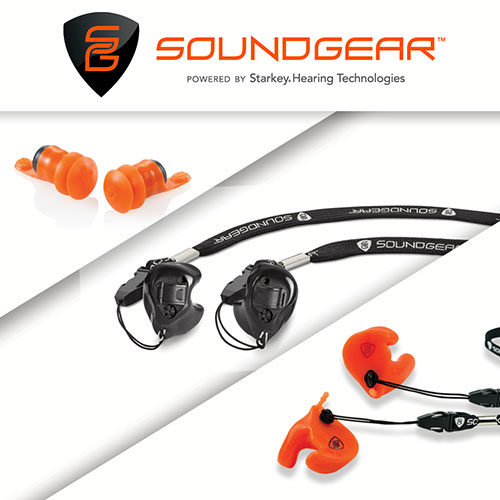Preserving hearing health
My earmuffs are too bulky. What other types of hearing protection can I use? Are there other ways I can preserve my hearing?

Responding is Lance Kraemer, SoundGear product manager, Starkey Hearing Technologies, Eden Prairie, MN.
Answer: For hunters, carpenters and industrial workers, cost-effective hearing protection solutions largely have been limited to foam earplugs and earmuffs. But, in the past few years, new digital hearing protection devices have emerged, providing better hearing protection, more comfort and increased flexibility in terms of style and cost. A major appeal for new digital hearing protection devices is their exceptionally small size. Instant-fit and custom-fit hearing protection products don’t physically interfere and often provide greater comfort for all-day use. This especially is true for people who opt for custom-fit options, because the product is molded uniquely to their ears.
When it comes to technology, these devices surpass earmuffs in terms of protection, overall use and enjoyment. Hearing damage can occur with exposure to sounds 90 dB and higher in less than two hours. Gunshots average 140 dB and can cause instantaneous hearing loss when ears are left unprotected. Employees working in industrial environments, using a jackhammer or chainsaw, typically are exposed to sounds around 115 dB to 125 dB, which can cause hearing loss in less than 30 seconds, according to NIOSH. Digital hearing protection products deliver effective noise reduction when exposed to dangerous sounds and, in some models, provide superior environmental monitoring when noise levels are safe. This duality plays into the overall superior use and enjoyment when compared with earmuffs, as it allows workers to be able to converse and hear important sounds.
Beyond using hearing protection when exposed to dangerous noise levels, the best way to preserve hearing health is to add annual hearing tests to your routine physical. Hearing loss can progress gradually as a result of a multitude of causes, including aging, genetics and illness, but annual testing can help you be proactive by avoiding many of the serious consequences hearing loss can cause over time.
Editor's note: This article represents the independent views of the author and should not be construed as a National Safety Council endorsement.
Post a comment to this article
Safety+Health welcomes comments that promote respectful dialogue. Please stay on topic. Comments that contain personal attacks, profanity or abusive language – or those aggressively promoting products or services – will be removed. We reserve the right to determine which comments violate our comment policy. (Anonymous comments are welcome; merely skip the “name” field in the comment box. An email address is required but will not be included with your comment.)

